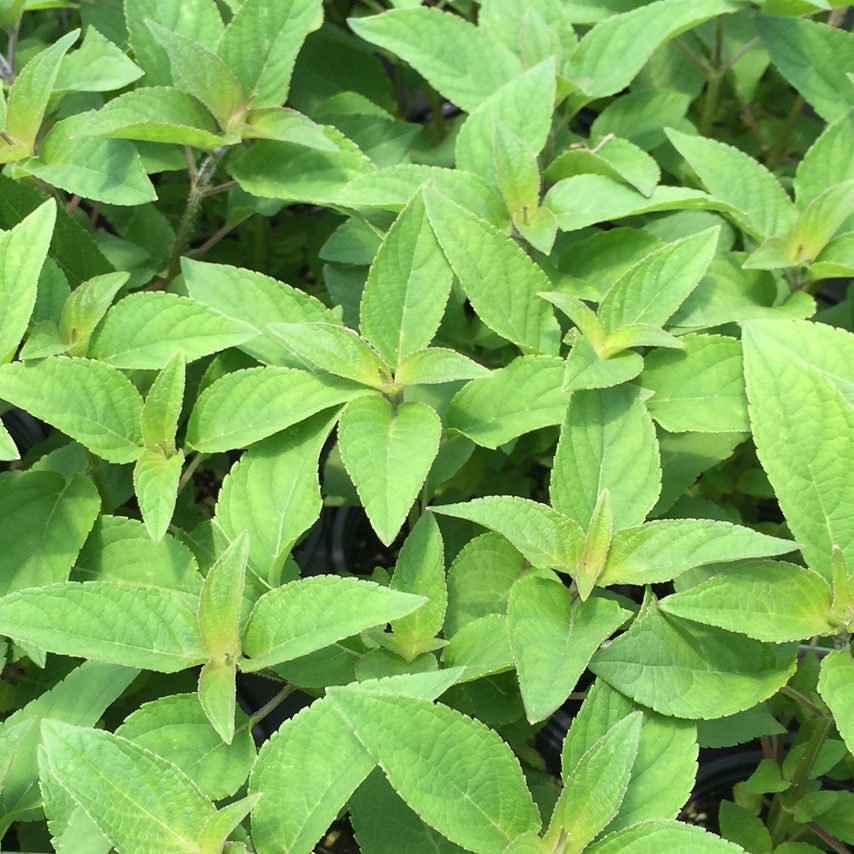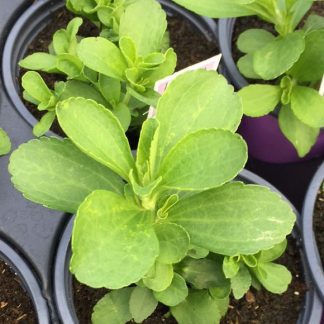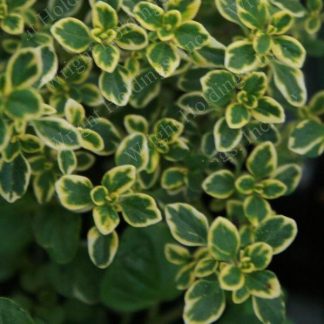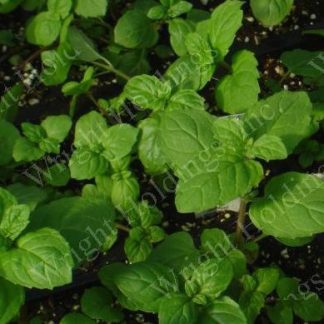Description
Pineapple Sage (Salvia rutilans): A Fragrant Garden Superstar
Pineapple sage is one of those rare plants that feels like pure sunshine in the garden. Its lush green leaves release a sweet pineapple scent when touched, and its brilliant red flowers light up the landscape late in the season when most plants are slowing down. Even better, this fragrant herb does double duty: it’s beautiful, flavorful, and beloved by pollinators like hummingbirds and butterflies.
Growing pineapple sage is simple, and the rewards are endless. Whether you’re planting it for culinary use, ornamental beauty, or as a wildlife magnet, this herb earns its place in every garden.
Why Pineapple Sage Steals the Show
Pineapple sage (Salvia rutilans) belongs to the mint family, but its tropical twist sets it apart. Native to Central America and Mexico, it thrives in warm climates and brings a unique mix of aroma and beauty.
- Striking Red Blooms: Its tubular scarlet flowers appear in late summer and fall, often coinciding with hummingbird migration, turning your garden into a lively feeding ground.
- Delicious Aroma: Crush the leaves, and you’ll notice an unmistakable pineapple scent that’s both refreshing and playful.
- Versatile Uses: From teas and cocktails to garnishes and floral arrangements, pineapple sage bridges the gap between kitchen and garden.
- Pollinator Magnet: Bees, butterflies, and hummingbirds adore the nectar-rich flowers, boosting biodiversity around your home.
Ideal Growing Conditions
Pineapple sage is surprisingly forgiving, but it thrives when you give it what it loves most: sun, warmth, and space to stretch.
Sunlight
Full sun is best. Aim for at least six to eight hours of direct sunlight daily. In cooler climates, choose the warmest spot you have.
Soil
Well-draining soil is essential. Pineapple sage dislikes soggy roots. A mix of garden soil and compost works well, providing both drainage and nutrients.
Water
This herb enjoys consistent moisture but doesn’t want wet feet. Water when the top inch of soil feels dry. Mulching around the base helps retain moisture and reduces stress during hot spells.
Temperature
Pineapple sage loves warmth. It grows as a perennial in zones 8–11, where winters are mild. In colder areas, treat it as an annual or overwinter it indoors in pots.
Planting Pineapple Sage
Starting pineapple sage in your garden is simple, whether you begin with seeds, cuttings, or nursery-grown plants.
From Seeds
Seeds can be slow to germinate and require warmth to sprout. Start them indoors 6–8 weeks before your last frost date. Transplant seedlings once the danger of frost has passed and the soil is warm.
From Cuttings
Cuttings are the easiest and fastest way to propagate pineapple sage. Snip a healthy stem, remove the lower leaves, and root it in water or moist soil. Within weeks, you’ll have a new plant ready for the garden.
Spacing
Give each plant room to grow. Mature pineapple sage can reach 3–5 feet tall and just as wide, so space plants at least 24–36 inches apart.
Caring for Your Plant
Pineapple sage is low-maintenance, but a few simple practices keep it thriving and blooming beautifully.
Pruning
Regular pruning encourages bushier growth and prevents the plant from becoming leggy. Trim back about one-third of the plant in midsummer to promote fresh leaves and late-season flowers.
Fertilizing
It doesn’t demand much feeding. A balanced organic fertilizer or a layer of compost in spring is usually enough to fuel growth and flowering.
Overwintering
In colder zones, dig up your plant and move it into a container before the first frost. Keep it indoors in a sunny window or under grow lights. Water sparingly through winter and return it outdoors after the danger of frost passes.
Harvesting and Using Pineapple Sage
The leaves and flowers of pineapple sage are both edible and aromatic, making them perfect for fresh, creative recipes.
Harvesting Leaves
Pick young leaves for the best flavor. Use them fresh in teas, salads, fruit dishes, or as a garnish for desserts. Their mild pineapple scent adds a surprising twist.
Edible Flowers
The bright red flowers are not only beautiful but also sweet and edible. Scatter them on cakes, salads, or cocktails for a splash of color and flavor.
Culinary Inspiration
- Herbal teas: Brew fresh leaves with honey and lemon for a tropical twist.
- Fruit salads: Chop leaves and flowers to mix with strawberries, mango, or pineapple.
- Cocktails: Muddle leaves into mojitos or sangrias for a refreshing flavor boost.
- Desserts: Use as a garnish for cheesecakes, sorbets, and ice creams.
Attracting Pollinators with Pineapple Sage
One of the most magical things about pineapple sage is how it transforms a garden into a pollinator haven.
- Hummingbirds flock to the red flowers in late summer and fall, especially during migration periods.
- Butterflies visit for the nectar, adding movement and color to your garden.
- Bees love it too, ensuring your entire garden benefits from increased pollination.
Planting pineapple sage alongside other pollinator-friendly herbs, like lavender and oregano, creates a rich, buzzing ecosystem.
Combining Pineapple Sage in the Garden
Pineapple sage is as beautiful in design as it is practical. Its size and color make it perfect for creating dramatic garden combinations.
- With ornamental grasses: The fine textures contrast beautifully with sage’s bold leaves and flowers.
- In herb gardens: Pair with rosemary, basil, and thyme for a fragrant, edible mix.
- In pollinator borders: Combine with salvias, bee balm, and coneflowers for a nectar-rich display.
- Containers: Large pots highlight the plant’s tropical vibe and keep it portable for overwintering.
Troubleshooting Common Issues
Pineapple sage is generally pest-free and disease-resistant. Still, a few problems may arise.
- Leggy growth: Caused by low light or lack of pruning. Solution: prune regularly and ensure full sun.
- Root rot: Happens in poorly draining soil. Solution: plant in raised beds or amend soil for drainage.
- Frost damage: Blackened leaves after a cold snap. Solution: cover plants or bring them indoors when frost is expected.
Why You’ll Love Growing Pineapple Sage
Few plants bring so much joy with so little effort. Pineapple sage delights the senses with its fruity scent, vivid flowers, and culinary potential. It bridges the gap between ornamental beauty and edible utility, all while supporting pollinators and adding a splash of cheer to the garden.
Whether you grow it for hummingbirds, kitchen experiments, or its tropical charm, pineapple sage will quickly become a favorite.
A Garden Gem Worth Sharing
Planting pineapple sage isn’t just about growing an herb. It’s about inviting life, color, and fragrance into your everyday space. With minimal care, this vibrant perennial rewards you with months of lush growth, dazzling flowers, and a steady stream of pollinators.
Once you experience its sweet aroma and late-season fireworks, you’ll wonder how your garden ever felt complete without it.




